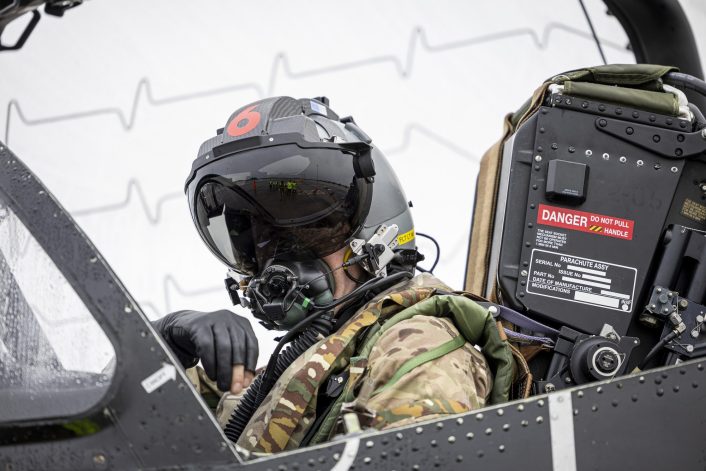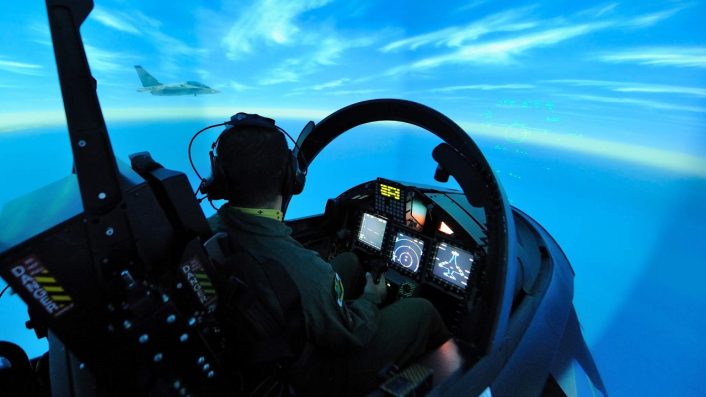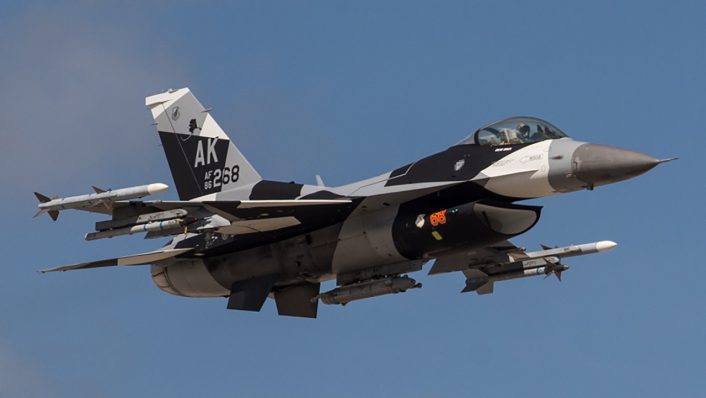ATARS moves beyond trainers as Red 6 secures its first frontline fighter contract, bringing augmented reality into F-16 cockpits.
Red 6 has secured a contract from the U.S. Air Force to integrate its ATARS (Airborne Tactical Augmented Reality System) into the F-16 Fighting Falcon. The system is poised to deliver real-time, in-flight synthetic air combat training directly into the cockpit of the F-16.
The contract, awarded by the Air Force Research Laboratory and Air Combat Command, marks the first time ATARS will be integrated into an operational fighter cockpit. The system has been previously integrated on the T-38, MC-130 and the Hawk T2.
ATARS allows pilots to fight against intelligent virtual adversaries, maneuvering in real-time during flight for immersive, repeatable, and measurable training. Blending the live flight operations with the flexibility of simulation allows to improve the effectiveness of the training even when live adversary aircraft are not available.
“This is more than a contract — it’s a validation of our vision and a signal that the future of air combat training has arrived,” said Daniel Robinson, Co-founder and CEO of Red 6. “ATARS is the only system capable of replicating the cognitive complexity fighter pilots face in real-world engagements — and now we’re delivering it in the cockpit of a frontline tactical jet. The F-16 is just the beginning.”

Red 6 and ATARS
Red 6’s Airborne Tactical Augmented Reality System (ATARS) is shaping up to become one of the most disruptive technologies in military pilot training. The Florida-based company was founded in 2018 by former fighter pilots, including Robinson who is a former Royal Air Force pilot who became the first non-American to fly on the F-22 Raptor during an exchange tour, also achieving the instructor pilot qualification.
ATARS combines live flying with augmented reality to create highly realistic combat scenarios without the need for physical adversaries. This is especially relevant as the availability of live adversary aircraft is not only feasible, and often requires the squadron to employ some of its aircraft for this role instead of training pilots.
Using a specially designed wide field-of-view AR headset that integrates with standard flight helmets, ATARS projects synthetic elements—enemy aircraft, missiles, refueling tankers, or friendly assets—directly into the pilot’s view of the real world, exactly as the AR headsets which are becoming increasingly common. However, unlike simulator-based training, ATARS allows crews to experience the physiological and cognitive demands of actual flight—G forces, atmospheric conditions, and workload—while interacting with virtual threats and assets, something that can’t be replicated even by the most advanced simulators.

The U.S. Air Force has already contracted Red 6 in 2021 under a deal worth up to $70 million to integrate ATARS on the T-38 Talon, with further testing on the MC-130 as part of a contract awarded in 2024. The technology has also attracted major industry partners:, with Lockheed Martin and Korea Aerospace Industries are working to bring it onto the T-50/TF-50 trainer, while Boeing has demonstrated AR integration on the TA-4J and plans for the T-7 Red Hawk. In the UK, the Royal Air Force recently completed demonstration flights with ATARS on the Hawk T2.
A key feature of this technology is Red 6’s proprietary Collaborative Airborne Training Environment (CARBON), which allows multiple aircraft to share the same AR battlespace, effectively creating a distributed “outdoor military metaverse,” as the company calls it. By reducing costs linked to adversary aircraft and providing scalable, software-driven training scenarios, ATARS offers a flexible solution to prepare pilots against rapidly evolving threats, allowing to simulate even large, complex missions which would be possible only during large force exercises and not for standard unit training or formal training units (FTU).
Live vs virtual adversaries
The integration of Red 6’s ATARS into the F-16 comes at a time when the U.S. Air Force faces growing challenges in providing realistic adversary training. Traditionally, “Red Air” aggressor squadrons simulate enemy tactics using frontline aircraft, but maintaining these units is costly, and the availability of aircraft for dedicated adversary roles is limited.
As a result, training often competes with operational requirements, leaving pilots with fewer opportunities to face sophisticated threats in the air. In response, the Air Force has increasingly turned to contracted adversary aircraft, operated by companies such as Draken International and Top Aces, to supplement traditional Red Air. While contracted units can replicate many enemy profiles, they still carry logistical and financial constraints, and their availability is finite.

Moreover, the Air Force is reducing its own Red Air, divesting some of the aircraft as these units are assigned some of the oldest airframes in the fleet. Nellis Air Force Base, Nevada, hosts three Aggressor Squadrons – the 64th (F-16), 65th (F-35) and 706th (Reserve F-16) – while Eielson AFB, Alaska, hosted another – the 18th AGRS, which is now a Fighter Interceptor Squadron.
ATARS addresses these challenges by projecting intelligent virtual adversaries directly into the pilot’s view during live flight, effectively multiplying the number and complexity of opponents a squadron can engage without requiring additional aircraft. By combining physiological realism—G-forces, maneuvers, and atmospheric conditions—with dynamic AR-generated threats, ATARS allows pilots to experience the cognitive demands of air combat at a scale that would be impossible using only live Red Air.
This capability could relieve some pressure on both traditional and contracted adversary resources, offering a scalable solution to maintain pilot readiness against increasingly sophisticated aerial threats.









